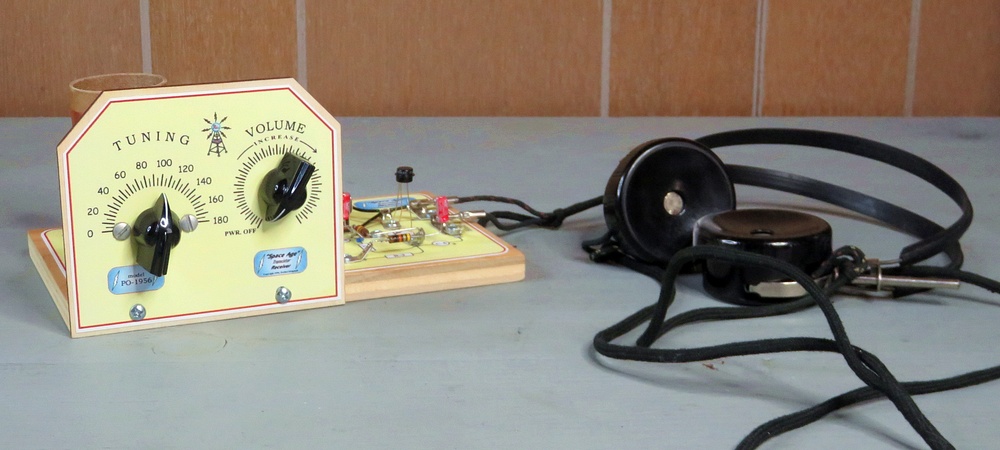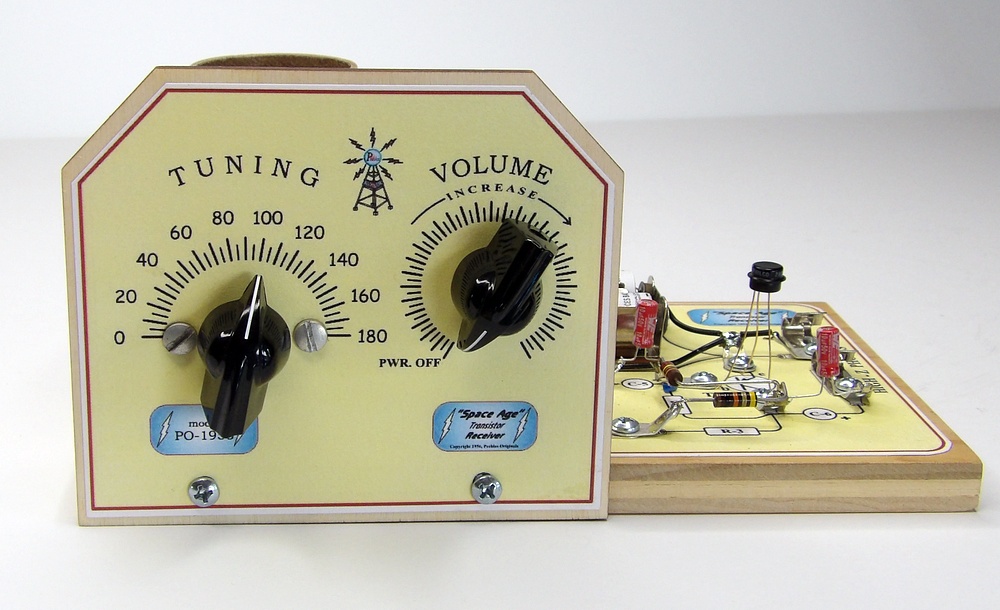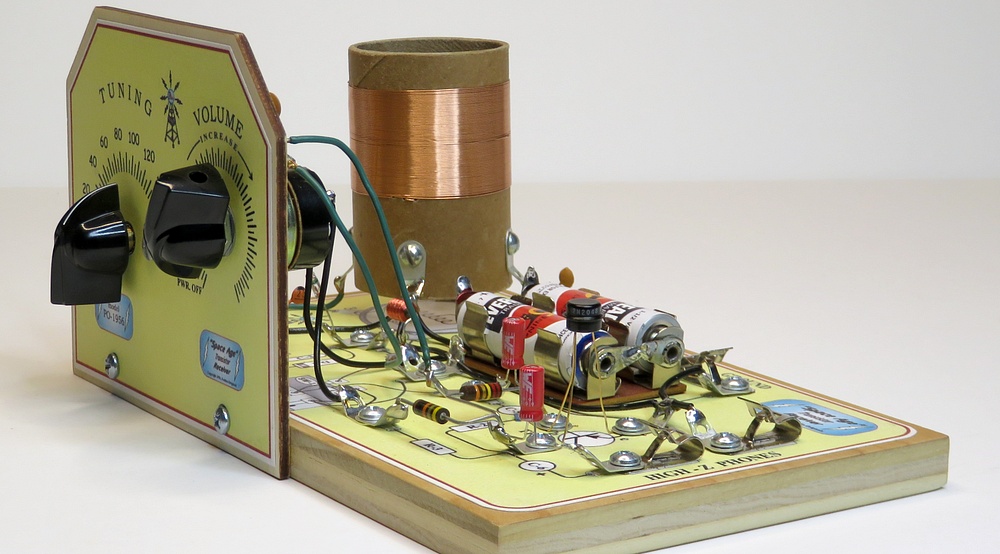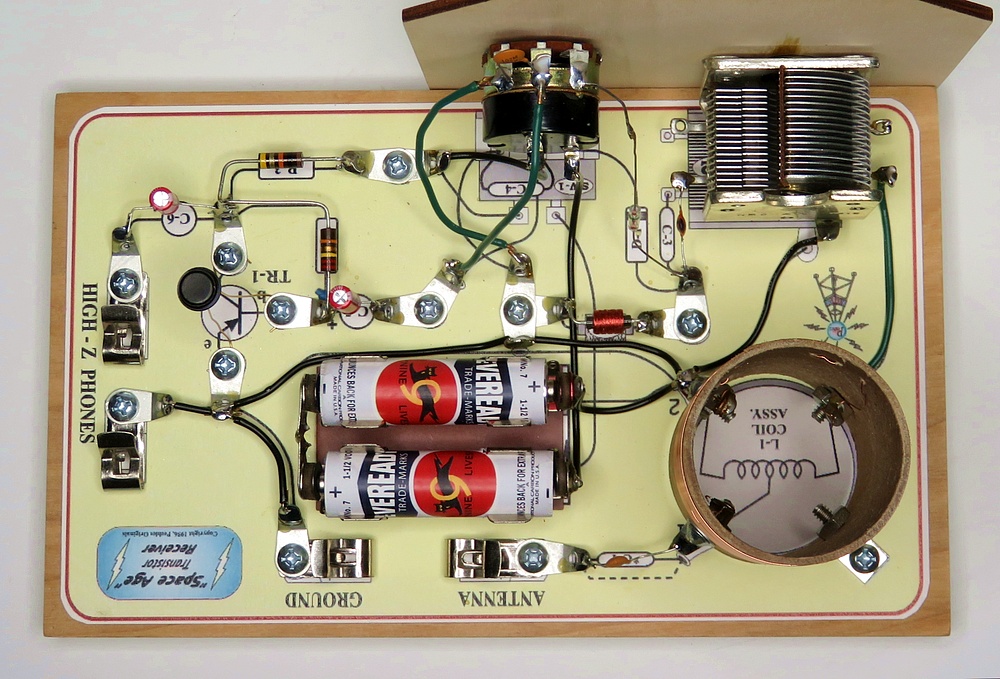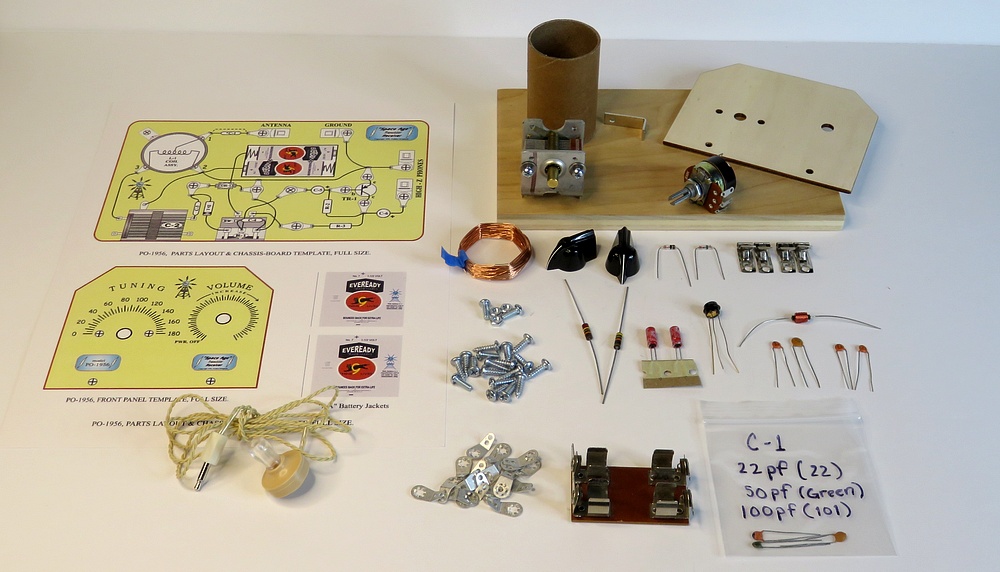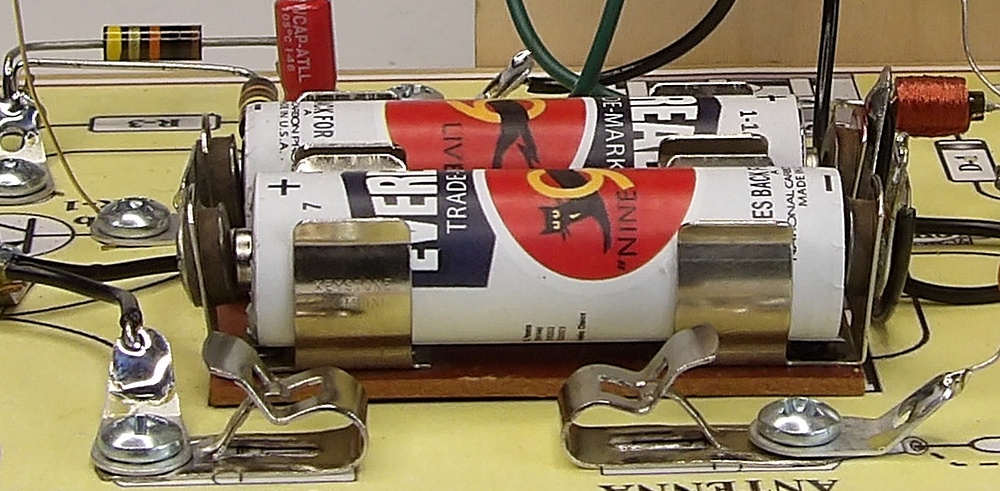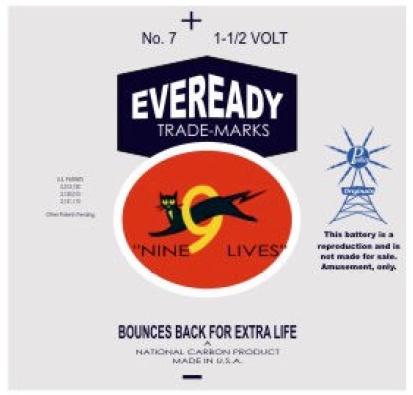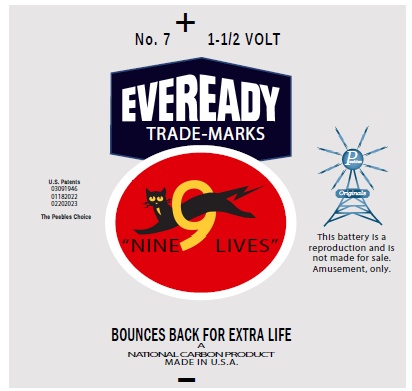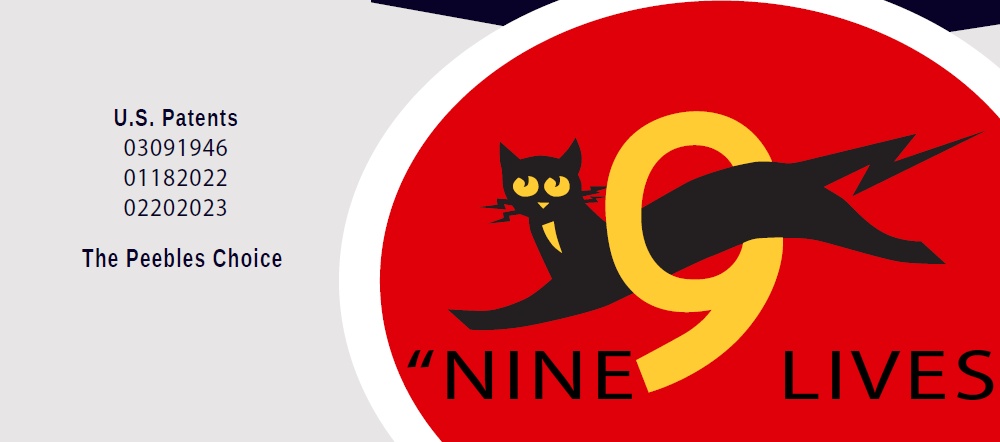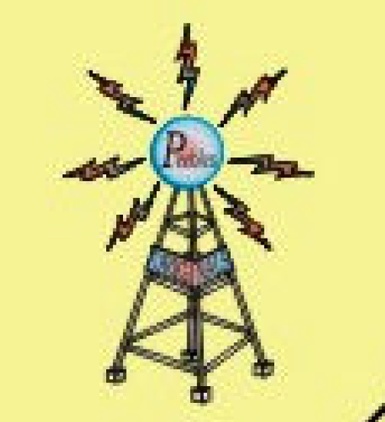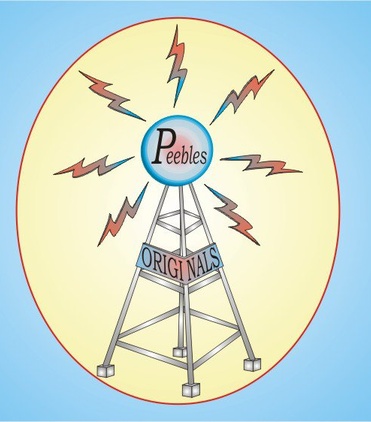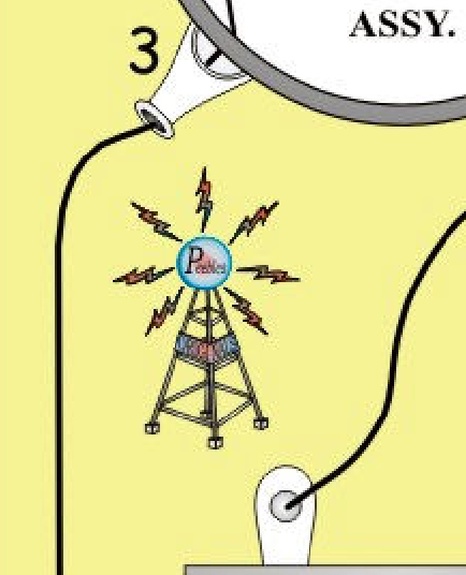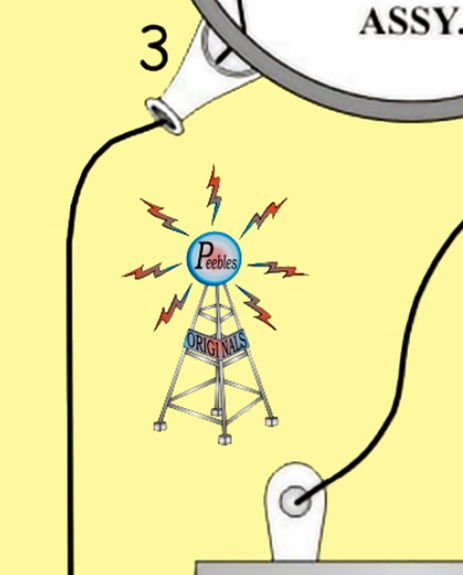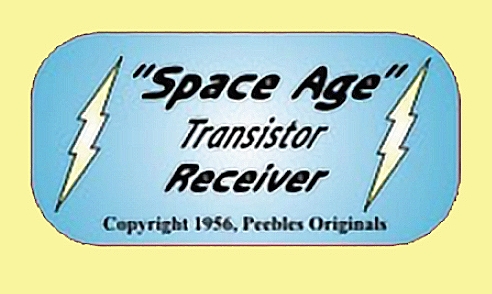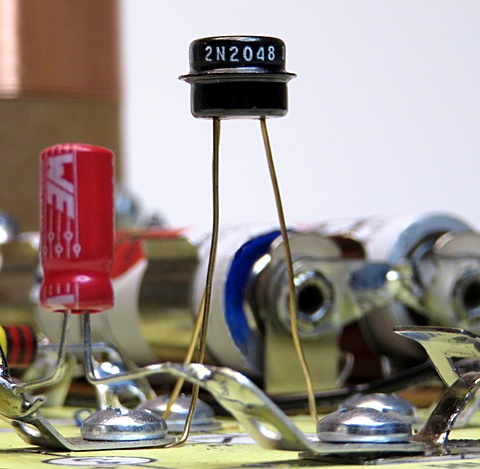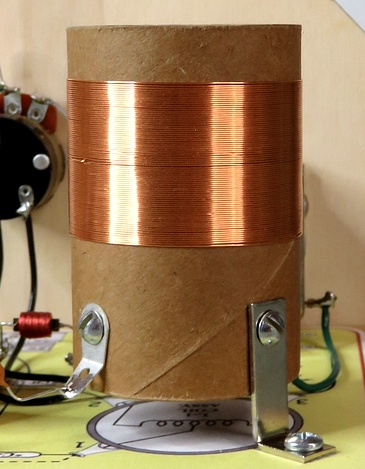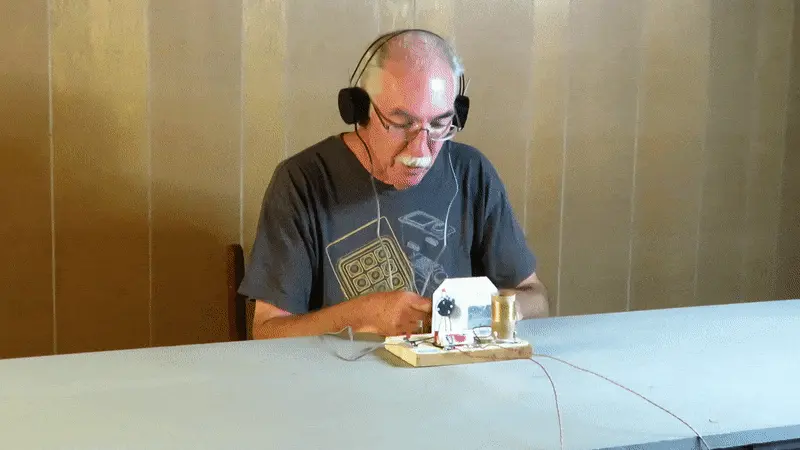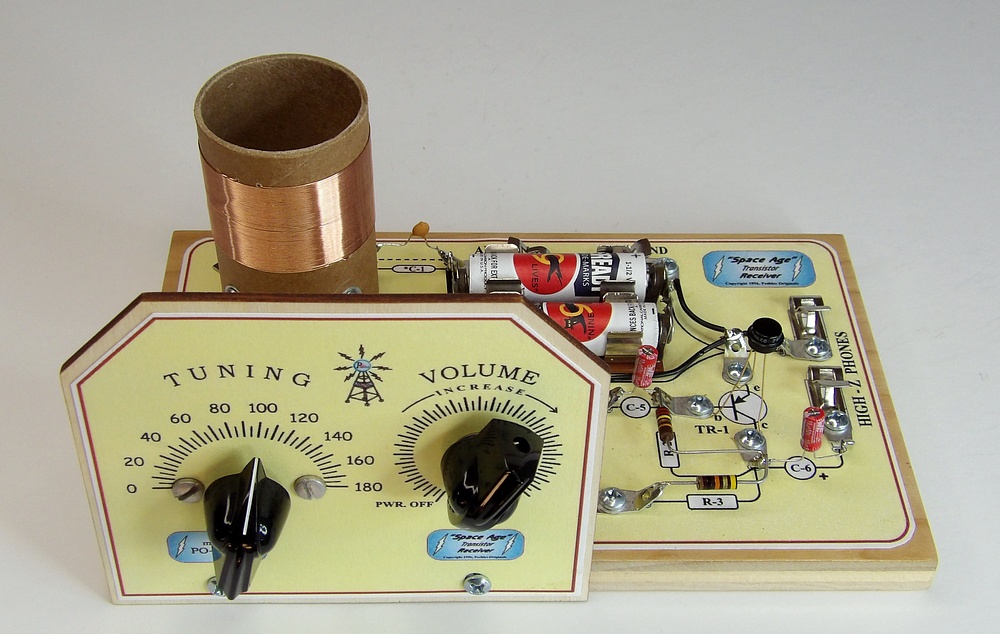 |
"Peebles
Originals" PO-1956 Crystal Radio Kit |
 |
|
|
|
|
|
|
| Shown here is a Peebles Originals
PO-1956 radio kit reproduction. The PO-1956 was a
reproduction of a radio kit that Mike Peebles' father gave
him in 1956 when Mike was 10 years old, so the radio above is
a reproduction of a reproduction. The
PO-1956 kit appeared on the Peebles Originals website
sometime between October and December of 2009. According to
Mike, this was the
third version. He never mentioned exactly what kit his
father gave him, but it had a transistor amplifier. It's
unlikely it looked like the one above. |
|
|
|
|
|
|
This clone of the PO-1956 crystal set
was assembled in September of 2023. |
|
The kit was made by Victor Rodriguez. |
|
|
|
The front panel is laser cut, an
improvement over the original kit. |
|
|
|
|
|
|
The PO-1956 is a crystal radio with a
one transistor amplifier. |
|
|
|
|
|
To assemble the radio, you attach the base
drawing to the base, then just follow the picture. You also have to
wind the coil. |
|
|
|
|
|
Here is a layout of the parts that came in the
kit. |
|
|
|
|
| The kit made by Vic came with
battery skins to make 1956 vintage batteries. Unlike the
paper skins from Mike Peebles, these are pressure sensitive
vinyl stickers. They make a more realistic battery. |
|
| |
|
|
| Vic meticulously recreated
the graphics for the kit. On the left is Mike's battery label,
included with the instructions. On the right is a much
higher resolution label made by Vic. |
|
| |
|
|
| The patent numbers on
Mike's battery skins were indiscernible, so rather than
looking up the actual battery, Vic made up his own numbers.
The top number is the day Mike was born. The middle number
is the day he died. The third number is the day Vic made the
battery label. |
|
| |
|
|
| On the left is the "Peebles
Originals" logo from the kit instructions. On the right is a
recreation of the logo made by Vic. It is unfortunate that
we don't have access to Mike's original files. It's
even more
unfortunate for Vic, who spent hours on it. This could be
considered the Mike Peebles' trademark, though he never
registered it. |
|
| |
|
|
| On the left is a detail from the
base plate drawing that came from the Mike Peebles website. On the right is
the same detail from the recreated artwork made by Vic. |
|
| |
| There isn't anything wrong with Mike Peebles'
excellent artwork. The problem is that the instructions
available from the Peebles Originals website are not
in very high resolution. If you ordered the kit, Mike would
have included the graphics, printed in more detail. |
|
| |
|
|
| Interesting that the artwork is "Copyright 1956." Even more
interesting is that the "Space Age" didn't actually begin
until October 4, 1957. However, since a German V-2 did
actually enter space on June 20, 1944, we can let it go. |
|
| |
|
|
|
|
|
|
| On the left is the 2N2048
germanium
transistor specified in the original kit. It's a substitute for
the CK722 available in 1956 to hobbyists. It's not necessary to
have the leads that long, but I don't like to cut the leads
on a vintage transistor. The transistor was made by Sprague
in the 1960s and was purchased from a website in Finland in
2023. On the right is the center tapped
tuning coil. It is 78 turns of 28 gauge wire, with a tap at turn
39. |
|
|
|
|
|
|
|
|
The first time I used this radio, the
coil exploded. Then it blew out my headphones.
I think it had something to do with the lightning bolts on
the Peebles logo. |
|
|
|
|
|
|
|
|
| The part about the coil
exploding was just a joke. The radio works very well. It
picks up the five local stations here, about 20 miles north
of Philadelphia, PA, with decent selectivity. It easily
tunes the entire AM band, at least up to 1440 kHz. There are
no locals above that, so I don't know how high it tunes.
The volume isn't ear-splitting, but it's nice to have the
volume control. |
|
|
|
|
| |
|
|
|
|
|
|
|
|
| |
|
PO-1956 Radio Kit
Instruction Manual |
|
Peebles Originals
website |
|
|
|
|
|
|
|
We now return you to our regularly
scheduled broadcast. |
|
|
|
|
| |


